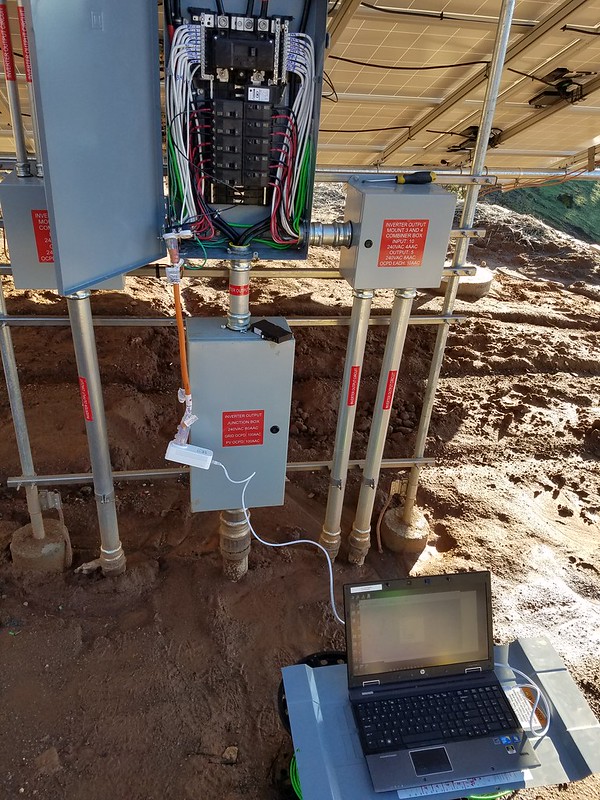I received my TP Link AV2000 kit yesterday and got it working inside of the home. Super simple, plug them in and they were communicating. For security I had them pair to each other and now they are not using the default keys. So easy - hit pair on one, hit pair on the other and your done.. I was able to take my laptop and one of the units and every plug I tried in the house worked fine. I even took the unit to my pump house about 80' away and plugged it into a GFCI plug up there and it worked great. The other unit is in my office plugged into a dedicated 15 amp circuit that has nothing else on it and it and it has a direct run to the main service panel. No GFCI or any surge protection. I know this is true since I watched the electrician install 4 dedicated 15 amp circuits into my office we we build the house and this is one I was not currently using.
Now the real test. I took it the other way 400' down to my solar system - endless mud from all of the recent rain - and did a temporary hack hookup just to see if it worked - I just pigtailed into one of the 10 amp AC solar breakers.

It did not communicate hooked to L2, so I repatched to L1 and there it still never gave a green light but I got a slowly blinking red light. Windows was seeing the internet and I was able to browse. I tried to get lanbench up and running but I started it and it was showing transfer and then nothing - like it was getting and losing communication. I went back up to the house with the unit and just made sure it was still working correctly in a few plugs I tried in the garage - works perfectly. Went back down the solar but communication was poor to nothing. By then I was starting to lose light and laptop was about to shut down due to low battery so I'll pick this up tomorrow. But so far it is not looking so good.
Now the real test. I took it the other way 400' down to my solar system - endless mud from all of the recent rain - and did a temporary hack hookup just to see if it worked - I just pigtailed into one of the 10 amp AC solar breakers.

It did not communicate hooked to L2, so I repatched to L1 and there it still never gave a green light but I got a slowly blinking red light. Windows was seeing the internet and I was able to browse. I tried to get lanbench up and running but I started it and it was showing transfer and then nothing - like it was getting and losing communication. I went back up to the house with the unit and just made sure it was still working correctly in a few plugs I tried in the garage - works perfectly. Went back down the solar but communication was poor to nothing. By then I was starting to lose light and laptop was about to shut down due to low battery so I'll pick this up tomorrow. But so far it is not looking so good.

Comment